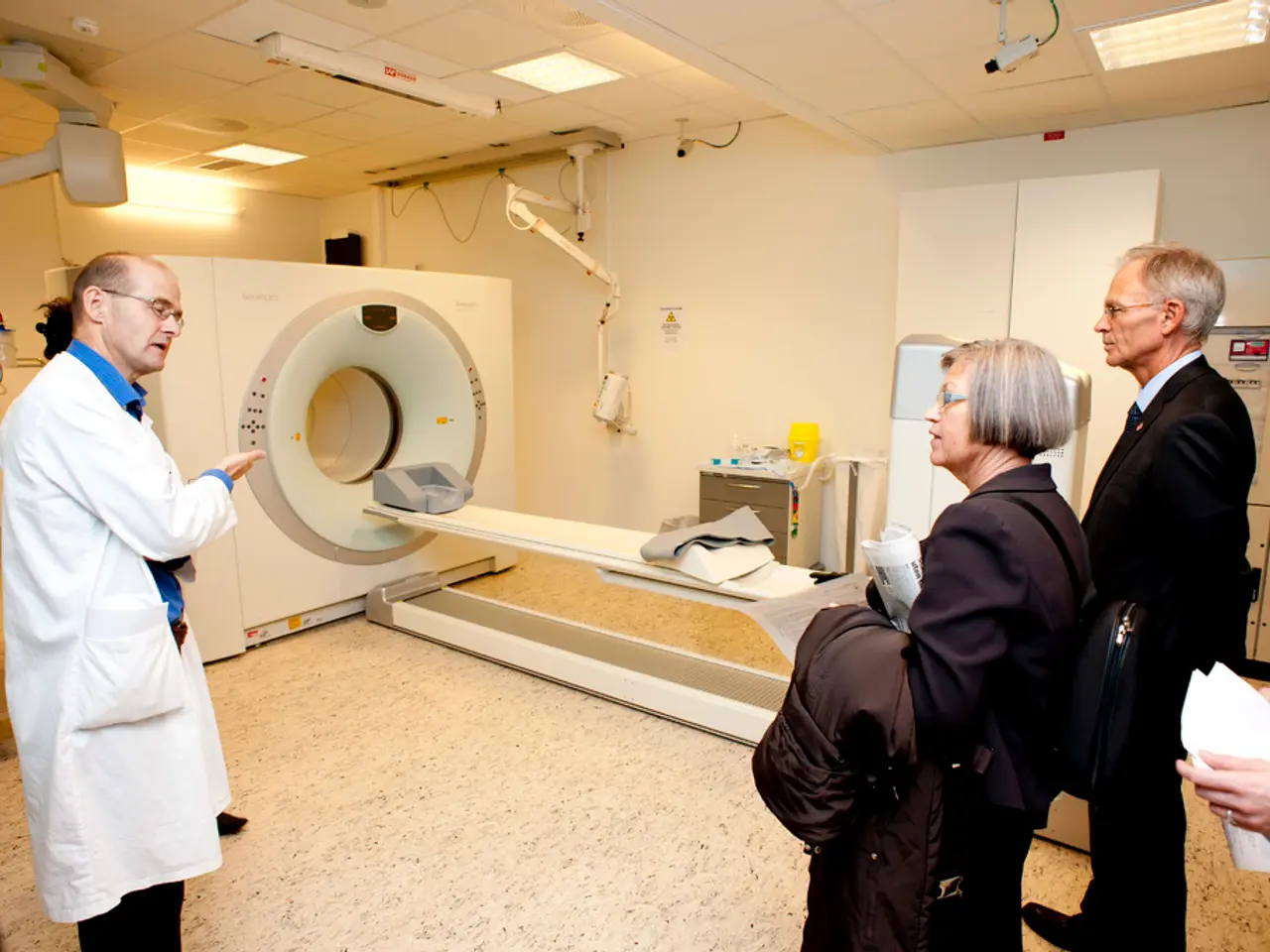Symptoms of Sexually Transmitted Diseases: Timeframe for Appearance and Testing Recommendations
In the realm of sexual health, regular testing for sexually transmitted infections (STIs) plays a crucial role. For those with multiple or anonymous partners, or those engaging in riskier sexual activities, a testing interval of 3 to 6 months is considered best practice [1].
This frequent testing schedule supports early detection and treatment, thereby reducing transmission risk. It is advisable to get tested soon after unprotected intercourse, as many STIs have an incubation period (often around 2 weeks) [1].
Symptomatic individuals should seek immediate testing regardless of the last test date. Symptoms such as burning, itching, sores, or unusual discharge may indicate an STI [1].
Routine testing is also essential for sexually active individuals. While some guidelines suggest testing at least once a year, higher frequency (every 3-6 months) is favored for those with higher risk [2][3].
Specific infections such as HIV, syphilis, hepatitis, chlamydia, herpes, and HPV require regular monitoring for high-risk individuals. For instance, HIV testing may be recommended yearly or more frequently, while syphilis testing is suggested about 3 months after exposure [3].
It is important to note that some STIs can lay dormant for many years without triggering any symptoms [4]. Examples include HIV, herpes, hepatitis C, chlamydia, syphilis, and HPV. Therefore, even if symptoms are not present, regular testing is vital.
HPV is not typically tested for in males, but in females, a Pap smear can detect HPV 3 weeks to a few months after exposure [5]. A doctor can test for trichomoniasis with a swab of the rectum, penis, or vagina. Many people do not have symptoms, but some may notice a discharge or burning sensation within 5-28 days of exposure [5].
Gonorrhea can be detected within 5 days to 2 weeks of exposure, while syphilis usually begins with a sore on the genitals called a chancre, which can be detected within 1-2 weeks after the chancre appears [5].
Early detection can make treatment easier and possibly prevent serious health issues. To reduce the risk of STIs, people should also practice safer sex techniques, such as using a condom [6].
The Centers for Disease Control and Prevention (CDC) recommend annual HIV testing for those at risk [7]. A blood test can look for both types of hepatitis: hepatitis B and C. The hepatitis B testing window is 3-6 weeks, while the hepatitis C testing window is 2-6 months [8].
In conclusion, regular STI testing, particularly for people who have sex with multiple partners, is essential for early detection and treatment. If you suspect an STI, seek medical assistance promptly. Remember, your sexual health is important, and regular testing can help maintain it.
References:
[1] CDC. (2021). Sexually Transmitted Disease (STD) Testing. https://www.cdc.gov/std/testing/
[2] Avert. (2021). Sexually Transmitted Infections (STIs) Testing and Treatment. https://www.avert.org/professional/hiv-programmes/testing-treatment/testing-and-treatment-sexually-transmitted-infections-stis/
[3] Mayo Clinic. (2021). Sexually Transmitted Diseases (STDs) Overview. https://www.mayoclinic.org/diseases-conditions/sexually-transmitted-diseases/symptoms-causes/syc-20350732
[4] NHS. (2021). Sexually Transmitted Infections (STIs). https://www.nhs.uk/conditions/sexually-transmitted-infections-stis/
[5] Planned Parenthood. (2021). Sexually Transmitted Diseases (STDs). https://www.plannedparenthood.org/learn/stds-hiv-aids/stds
[6] CDC. (2021). Condoms and Sexually Transmitted Diseases (STDs). https://www.cdc.gov/condomeffectiveness/latex.html
[7] CDC. (2021). HIV Testing. https://www.cdc.gov/hiv/testing/
[8] NHS. (2021). Hepatitis B and C. https://www.nhs.uk/conditions/hepatitis-b-and-c/
- In the context of sexual health, HIV, syphilis, hepatitis, chlamydia, herpes, and HPV are infections that require regular monitoring for high-risk individuals.
- Regular testing for sexually transmitted infections (STIs) is crucial for early detection and treatment, thus reducing transmission risk.
- Symptomatic individuals should immediately seek testing for STIs, regardless of the last test date, as symptoms such as burning, itching, sores, or unusual discharge may indicate an STI.
- A testing interval of 3 to 6 months is considered best practice for those with multiple or anonymous partners, or those engaging in riskier sexual activities.
- Regular testing is vital for sexually active individuals, and higher frequency (every 3-6 months) is favored for those with higher risk, as some STIs can lay dormant for many years without any symptoms.
- In the health-and-wellness realm, colorectal cancer screening is essential for preventing multiple sclerosis and depression, type 2 diabetes complications, and other health issues.
- Ankylosing spondylitis, a type of arthritis, may be prevented with early detection and treatment, including screening and the use of PREP medications.
- HPV (Human Papillomavirus) is not typically tested for in males, but in females, a Pap smear can detect HPV 3 weeks to a few months after exposure.
- A doctor can test for trichomoniasis with a swab of the rectum, penis, or vagina. Many people do not have symptoms, but some may notice a discharge or burning sensation within 5-28 days of exposure.
- Gonorrhea can be detected within 5 days to 2 weeks of exposure, while syphilis usually begins with a sore on the genitals called a chancre, which can be detected within 1-2 weeks after the chancre appears.
- Early detection of STIs can make treatment easier and possibly prevent serious health issues; practicing safer sex techniques, such as using a condom, can further reduce the risk.
- Predictive medicine, like the use of Paxlovid for treating COVID-19, is an example of how science continues to shape health-and-wellness and sexual-health advancements, making tests and treatments more accessible and effective.




